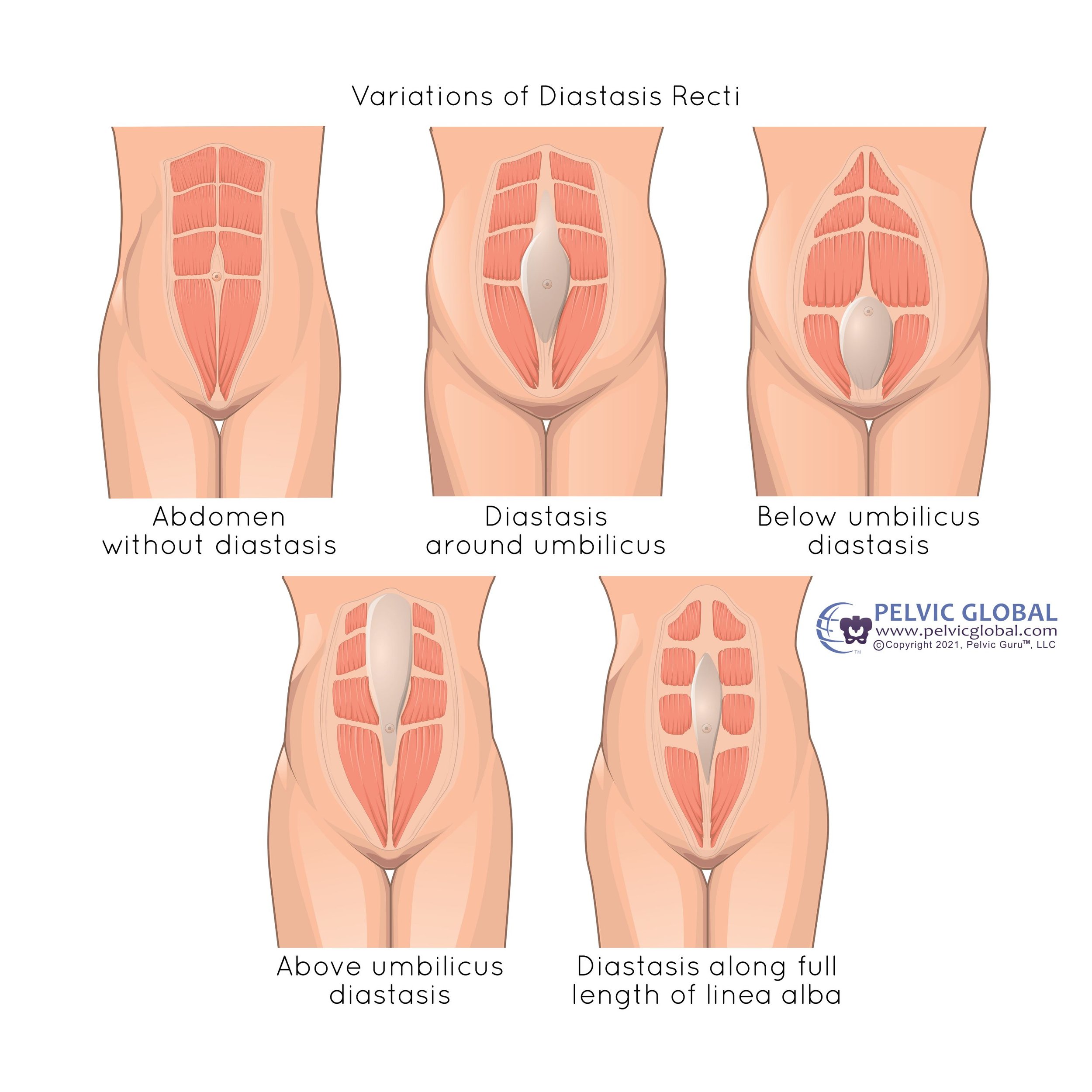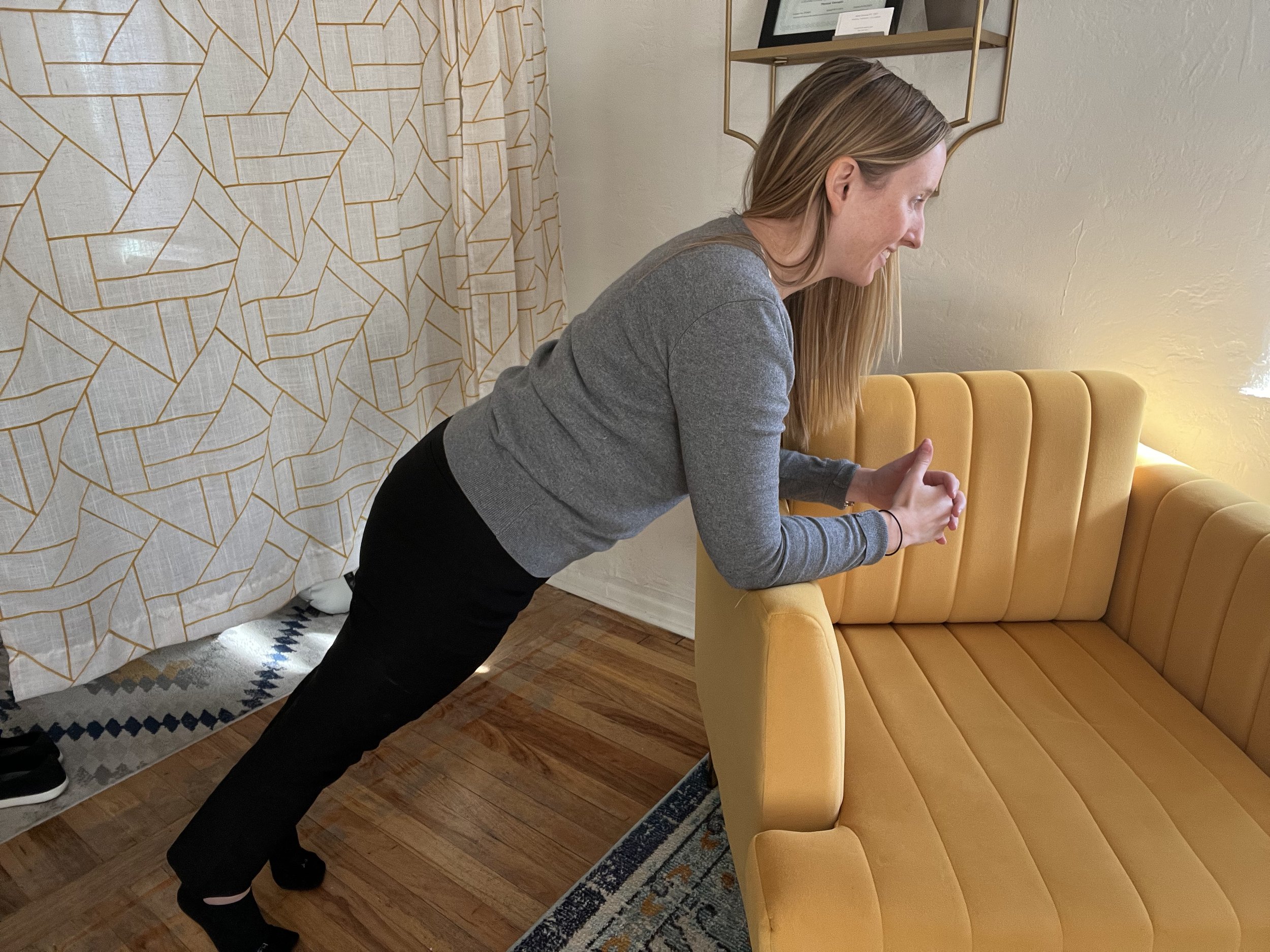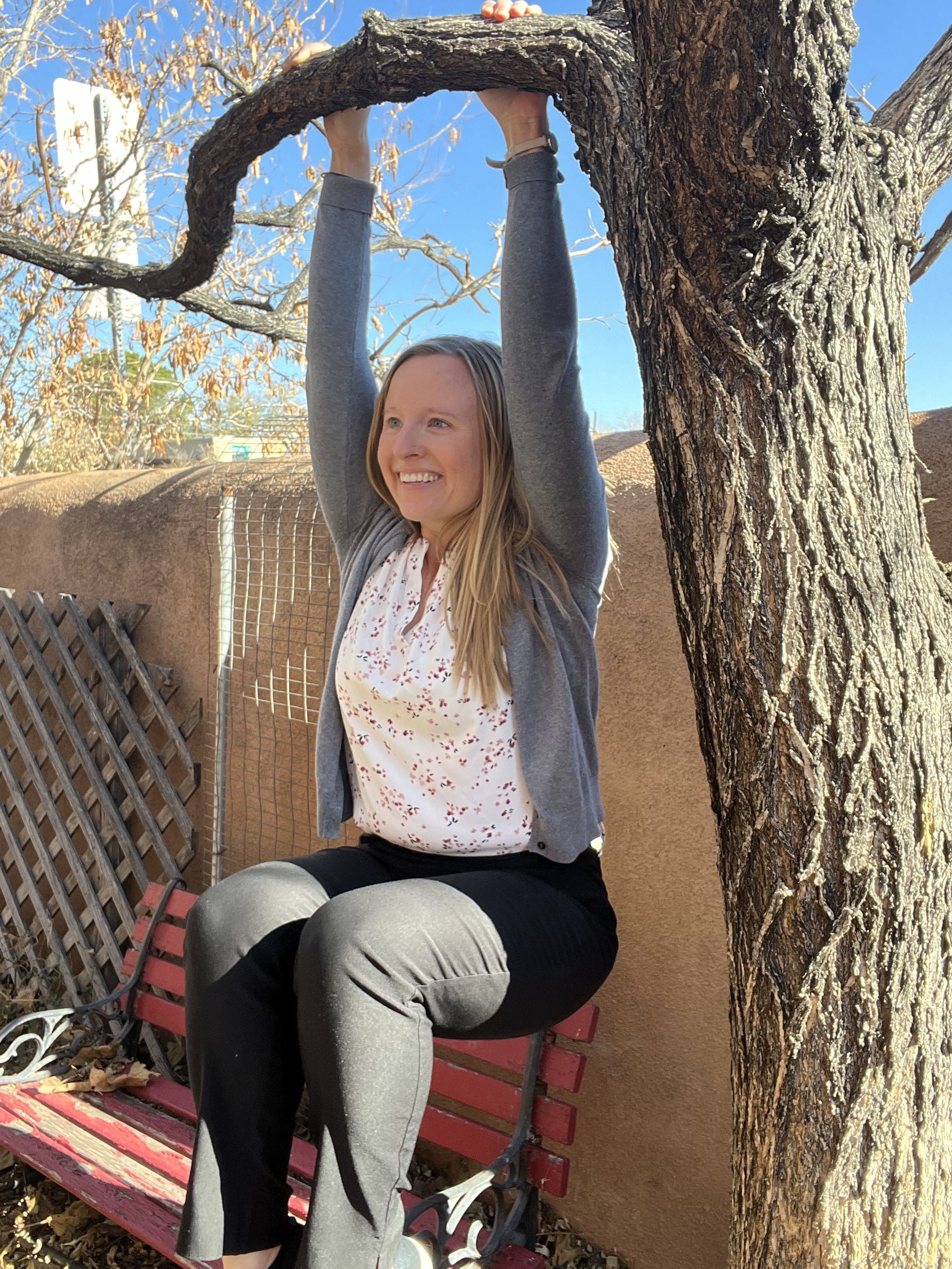Diastasis Recti- What is it? What can I do about it?
Diastasis Recti has become a hot topic in postpartum fitness in the last few years. What is it? What does it look like? What can I do about it? Let’s address some of those questions!
Diastasis Recti. Image used with permission from Pelvic Guru®, LLC as a member of the Global Pelvic Health Alliance Membership (GPHAM)
Diastasis Recti is a normal adaptation that occurs in 60-100% of pregnancies, most often noticed during the 3rd trimester. The two sides of your “six pack” muscles (rectus abdominis) are separated by a thick but narrow ligament called the linea alba. During pregnancy, that ligament softens to allow it to thin and stretch so that your uterus can grow to accommodate a growing baby. That thinning and stretching often results in a widening of the ligament and a separation of your six pack muscles. This normal adaptation has been shown to still be present at 6 weeks postpartum in 60% of individuals and at 12 weeks postpartum for 30-40% of individuals. Typically speaking, when we talk about postpartum diastasis recti, we’re talking about people who are experiencing abdominal separation after 3 months postpartum.
The good news is diastasis recti is not an injury. You’re not broken, and you don’t need to “heal” your abdominal muscles. If you want to adapt your muscles and ligaments back, you can do that, but be prepared to do some work!
*Note: sometimes lower back pain is associated with diastasis recti, but not always.*
Diastasis Recti self exam
How do I know if I have diastasis recti?
You can self-assess relatively simply. Lie down on your back with your knees bent and your head lifted/supported on at least 1 pillow. Put two to three fingers together and push them into the midline of your abdomen around your belly button. Then do a small crunch where you lift your head and shoulders off the pillow. During that crunch, do you feel your muscles come together and touch your fingers and then feel them move away from your fingers while you lower your head/shoulders? You may need to stay in the crunch position and move your fingers around sideways to find your muscles if the separation is wider than an inch across. You can also do the same test with your fingers a couple of inches above and below your belly button. If you feel that your muscles have a gap between them, that is diastasis recti. Typically, we only call it diastasis if that gap is wider than 3 cm.
Now that I think I have diastasis recti, what can I do about it?
When the rectus abdominis muscles are resting separated, they are longer than they are when they’re resting right next to each other. That means that if we want those muscles to start resting closer to each other again, we need to shorten them. How do I shorten them? By strengthening them. One of my favorite exercises to do that is a plank. Usually, I start with an easier version than a full plank: start with your forearms resting on the arm or seat of the couch and your toes on the floor so that your body is at an angle instead of perfectly parallel to the ground. While you’re here, focus on engaging your abdominal muscles, making sure you feel them working and pulling inward instead of just relaxing.
Modified plank on couch for diastasis recti
Next time you’re at the playground with your kiddos (or walking past one if your little one is too small for playing at a playground), go over to the monkey bars and hang from one. If that feels easy, can you hang there and pull one knee up toward your chest? If that feels easy, can you pull both knees toward your chest at the same time? Repeat them 5 times. Then let go of the monkey bar, rest for a bit, and do it again.
“Monkey bar” hang with knee tuck
While these exercises can be helpful, the best way that I know to adapt a core away from diastasis recti is with the help of someone who can see your body. I recommend visiting a pelvic floor PT: we are trained to examine your muscles, see how they’re working (and maybe where they’re not), and find the right exercises to challenge them and you so that they change. We will help you get back to doing the types of things you want to do without fear of “making things worse” or “doing the wrong thing.” At Method Physical Therapy, we can help you! If you have any questions or would like to be assessed and treated reach out at info@methodptnm.com,




